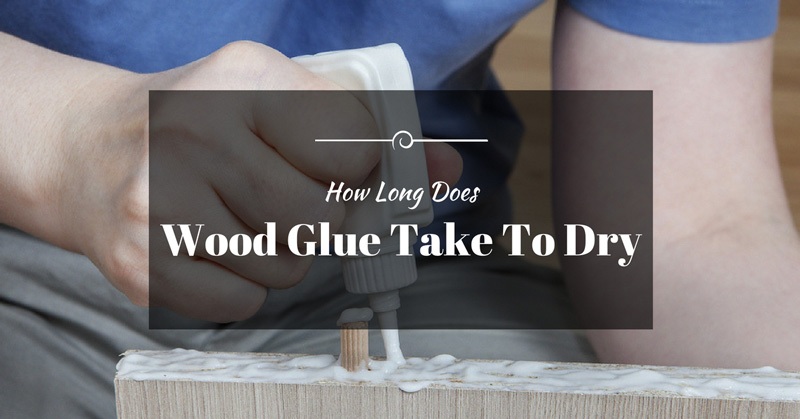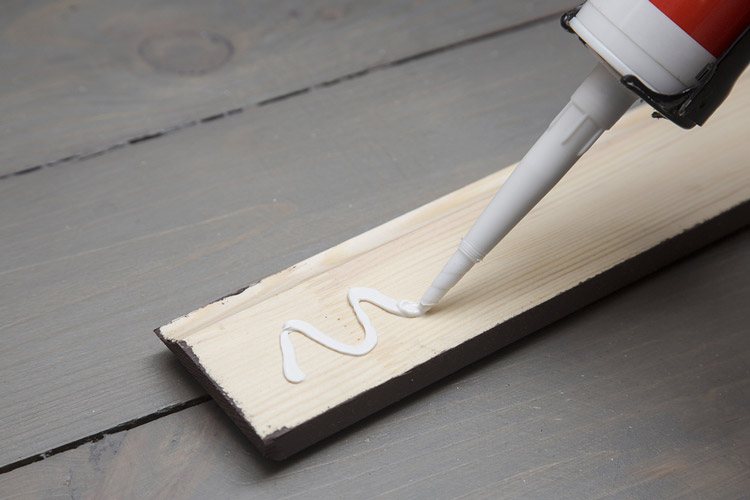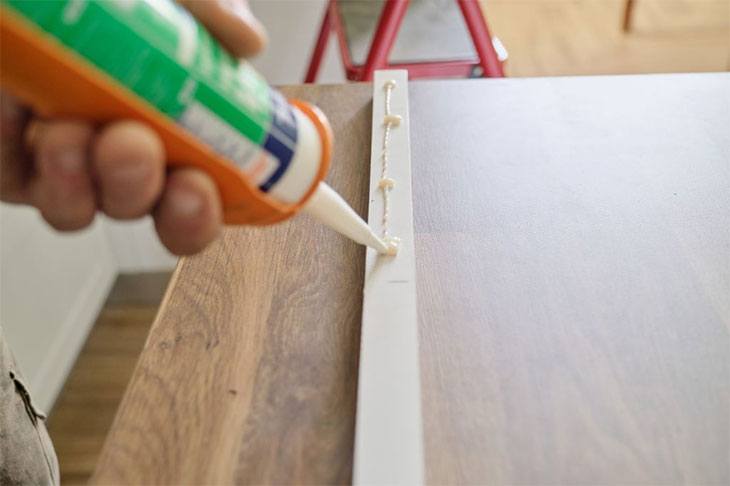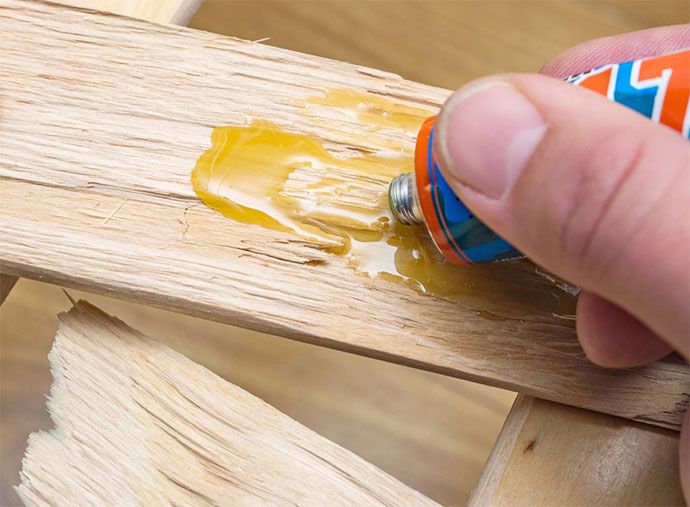When working with wood, it is inevitable that wood glue will be used to secure a joint. The instructions on the bottle may indicate a particular drying time, but is that the time that it takes the glue to dry or is that the waiting period required for taking off the wood clamps?
The question is, how long does wood glue take to dry?
There are a number of factors that will influence the drying time. There are also a number of ways to test whether the glue is in fact dry or not.
More...
Factors that influence the drying time of wood glue
There are many factors that influence how long wood glue would take to fully set or dry. Some of these factors are easily controlled while others must simply be accounted for.
1. Type of glue used

There are many different types of glue. Each type of glue has a different drying time and also different best use application. Glues which are designed for small projects tend to have a faster drying time than those designed for bonding large pieces of wood.
A polyvinyl resin, the commonly available white glue, tends to be fast setting. It is perfect for small bonding jobs which will not be exposed to high temperatures and do not require a waterproof factor. In contrast, hide glues are have a far longer setting time and so are better used on larger joins.
2. Best case setting times for various glues
- Reorcinal resin – slow setting
- Aliphatic resin glue – less than one hour
- Plastic resin glue – four hours
- Hide glue – slow setting
- Polyvinyl resin – quick setting
- Contact cement – thirty minutes drying before contact between the wood pieces
3. Wood porosity or density
In order for a bond to be created between two pieces of wood, the glue to be used needs to wet the wood. This means that a layer of glue needs to remain on the surface of the wood to be bonded.
A more porous wood will require more glue to achieve this wet layer. This is due to the wood’s ability to absorb the glue. The glue will need to remain in contact with both pieces of wood for a suitable period of time in order to effect a suitable and strong bond. If the glue is absorbed it is not able to bond the pieces of wood together.
As such, a more dense wood will offer a shorter setting time as less glue is required and so less moisture needs to evaporate in order for the glue to dry and cure.
However, it is worth noting that the penetration of the glue into the wood has an effect on the strength of the bond. A deeper penetration tends to lend itself to a stronger bond.

4. Temperature
In general, a higher temperature will allow the glue to set faster.
Some glues, polyvinyl resin for example, are sensitive to higher temperatures and will soften if they get too hot.
In some areas of the world a higher temperature leads to higher humidity and this leads to a longer drying time.
5. Moisture content of wood
Wood which contains excess moisture will naturally force the glue to a longer drying time. Glue dries by means of losing moisture through evaporation and absorption by the wood.
Wood which cannot absorb more moisture will force the glue to dry through environmental evaporation only which will take longer.
Read more —
6. Environmental humidity
A humid environment has a limited ability to absorb further moisture and so it will take longer for the moisture in the glue to evaporate.
In addition, wood stored in a humid environment will naturally be inclined to retain more moisture and so will have a reduced ability to absorb moisture from the glue.
For most glue types, the ideal situation would entail the use of well cured wood at six to eight percent moisture content that is well matched (in other words, few gaps between the pieces requiring filling by the glue), low humidity of forty to sixty percent and temperatures of between seventy and eighty degrees Fahrenheit.
In this situation, leave the clamps in place for the indicated drying time, then test the join. The glue will require a longer period, usually in excess of a day, to fully cure.
Testing that the wood glue is dry extra length

It can be a good idea, where possible, to glue with extra length.
This way it is possible to allow the glue to dry for the recommended time and then have excess join to test the cure of the glue.
Simply cut the wood to the desired length and attempt to pull apart the offcuts. If the bond fails, examine the pieces to determine the reason for the failure.
Some glues, such as polyvinyl resin, start white and dry clear.
In these instances a good indication that the glue has dried is when the beading along the glue line has changed from white to clear.
How to take a dry glued joint apart
All glues have their weaknesses and it is these weaknesses that must be exploited to take apart a dry glued joint.
1. Heat
Some glues are sensitive to high temperatures.
In these cases the application of heat by means of a hairdryer or heat gun can soften the glue to the point where the joint can be pulled apart without damaging the wood.
2. Moisture
Glues which are not waterproof or water resistant can be induced to release their hold on the joint by adding moisture. A good tactic is to take a warm and damp towel and place it around the joint.
As the towel dries, add more water and heat until the glue has softened.
3. Solvents

In the case of heat and water resistance there will be some kind of solvent that can be used to loosen the glue. Each type of glue will have a solvent.
If there is any uncertainty over which solvent to use, refer to the manufacturer’s use guide for the glue in question.
Conclusion
There are many factors affecting how long it takes for a wood glue to dry and how strong a bond it creates when it is dry.
By offering the best possible circumstances in the form of well matched and cured wood and optimal temperatures and humidity it is possible to create a strong bond that will only break when the correct loosening procedure is applied.
